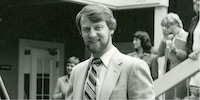
Background information
Gary Kildall: the almost-Gates
by Kevin Hofer
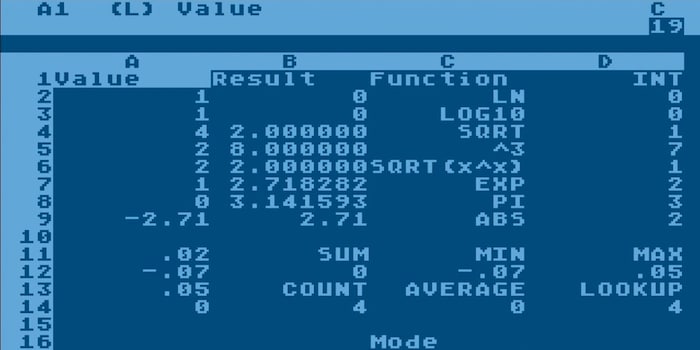
The PC owes its breakthrough above all to software that makes the computer usable for the average consumer. VisiCalc, a spreadsheet program, revolutionised the way we use computers at the end of the 1970s.
In the summer of 1978, Dan Bricklin, a student at Harvard Business School, is cycling past a vineyard when he makes a decision: He wants to realise his long-cherished dream of an interactive, digital calculator. VisiCalc, as the programme was later called, was born. Today, the programme is considered the first killer app in computer history.
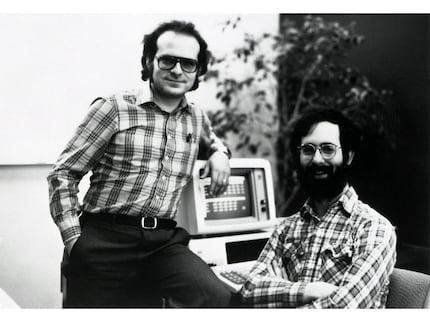
Bricklin is not the inventor of the electronic spreadsheet. The first known ideas for such programmes date back to 1961, when Richard Mattessich, a professor at the University of California at Berkeley, pioneered the development of computerised spreadsheets for corporate accounting. However, Bricklin's VisiCalc is unique in some respects when it is released in 1979:
Daniel Singer Bricklin was born on 16 July 1951 in Philadelphia. He attended the Akiba Hebrew Academy there before graduating from MIT (Massachusetts Institute of Technology) with a Bachelor of Science in Electrical Engineering/Computer Science. In 1977, he enrolled at Harvard University to complete his MBA.
The idea for VisiCalc came to Bricklin in the spring of 1978 during a daydream. He describes the scene as follows:
Imagine if my calculator had a ball in the back, like a mouse ... And imagine if I had a heads-up display, like in a fighter plane, where I could see the virtual image hanging in the air in front of me. I could just move my mouse/keyboard calculator around on the table, type in a few numbers, circle them to get a total ...
In short, Bricklin imagines a spreadsheet programme that he can operate with a mouse and keyboard on a PC.

In the summer of the same year, he made the decision to put his idea into practice. After graduating from the renowned Harvard University, he wanted to start his business straight away and sell the spreadsheet programme.
Bricklin's vision becomes more realistic over time and the heads-up display becomes a normal screen. He tries to prototype the design in Basic on a video terminal connected to the business school's timesharing system. Bricklin decides in favour of the display in rows and columns and that the status bar is used to display the formula and formatting behind the displayed values.
Bricklin had to bury his dream of using the mouse to control the first prototype for PC in autumn 1978 because he couldn't get the programming right. Instead, he used the Apple's game paddle, a kind of dial that could be rotated to interact with the game.
You could move the cursor left or right and then press the fire button, and by rotating the paddle you could move the cursor up and down. The R-C circuit or whatever in the Apple was too sluggish and my movements too imprecise to position the cursor exactly like that. So I switched to the two arrow keys on the Apple keyboard, it only had two, and used the space bar instead of the key to switch from horizontal to vertical movement.
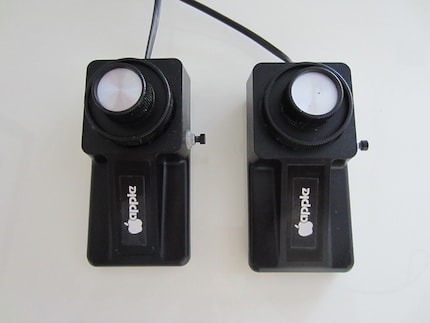
Bricklin decides to bring in a more experienced programmer. His former MIT colleague Bob Frankston creates the production code. As a result, the programme runs faster, the arithmetic is improved and it is now possible to scroll. Not only that: Frankston extends the programme and manages to reduce the code to 20 KB. This means that the programme can also be run on microcomputers. Fun fact: Despite the small size, the code does not run on the low-end Apple II for which it was written. This has only 16 KB RAM. That's why VisiCalc only runs on the 32 KB version of the Apple II.
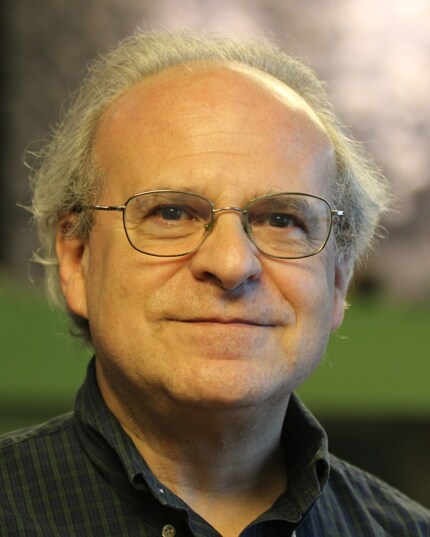
Bricklin and Frankston founded Software Arts Corporation in January 1979. In May 1979, Dan Fylstra's company Personal Software, later VisiCorp, began marketing VisiCalc. Bricklin originally conceived several names for the programme. Head of Marketing Dan Fylstra chooses the name "VisiCalc". This is an abbreviated form of the term "visible calculator".
VisiCalc is launched on the market in November 1979 and immediately becomes a great success. The programme costs 100 US dollars. It sells so well that many retailers bundle the Apple II with VisiCalc. The success of VisiCalc is one of the main reasons why Apple becomes a successful company: Tens of thousands of the expensive 32 KB Apple IIs are sold to businesses that only need them for spreadsheets.

VisiCalc becomes one of the key products that help bring the microcomputer from the hobbyist's desk to the office. The programme demonstrates most vividly the benefits of personal computers for companies: An employees that previously takes 20 hours a week in accounting is done with a few minutes of data entry. Before the release of this groundbreaking software, microcomputers were considered toys.
In 1981, Software Arts earns over 12 million dollars in licence fees from VisiCalc. However, the success does not last long. More powerful competitor products soon came onto the market.
1983 sees the release of Lotus 1-2-3. It is available exclusively for the IBM PC and other MS-DOS computers. Lotus works very similarly to VisiCalc, which makes migration easy. It utilises the enormous memory space of PCs, which allows for much larger spreadsheets than the Apple II can handle.

Microsoft releases Excel in 1985. Countless other developers fuelled the competition, leading to tensions between VisiCorp and Software Arts. VisiCorp sues Software Arts when the company delays the development of VisiCalc for the IBM PC in order to complete a version for the Apple IIe and III first.
From big data to big brother, Cyborgs to Sci-Fi. All aspects of technology and society fascinate me.
Interesting facts about products, behind-the-scenes looks at manufacturers and deep-dives on interesting people.
Show all